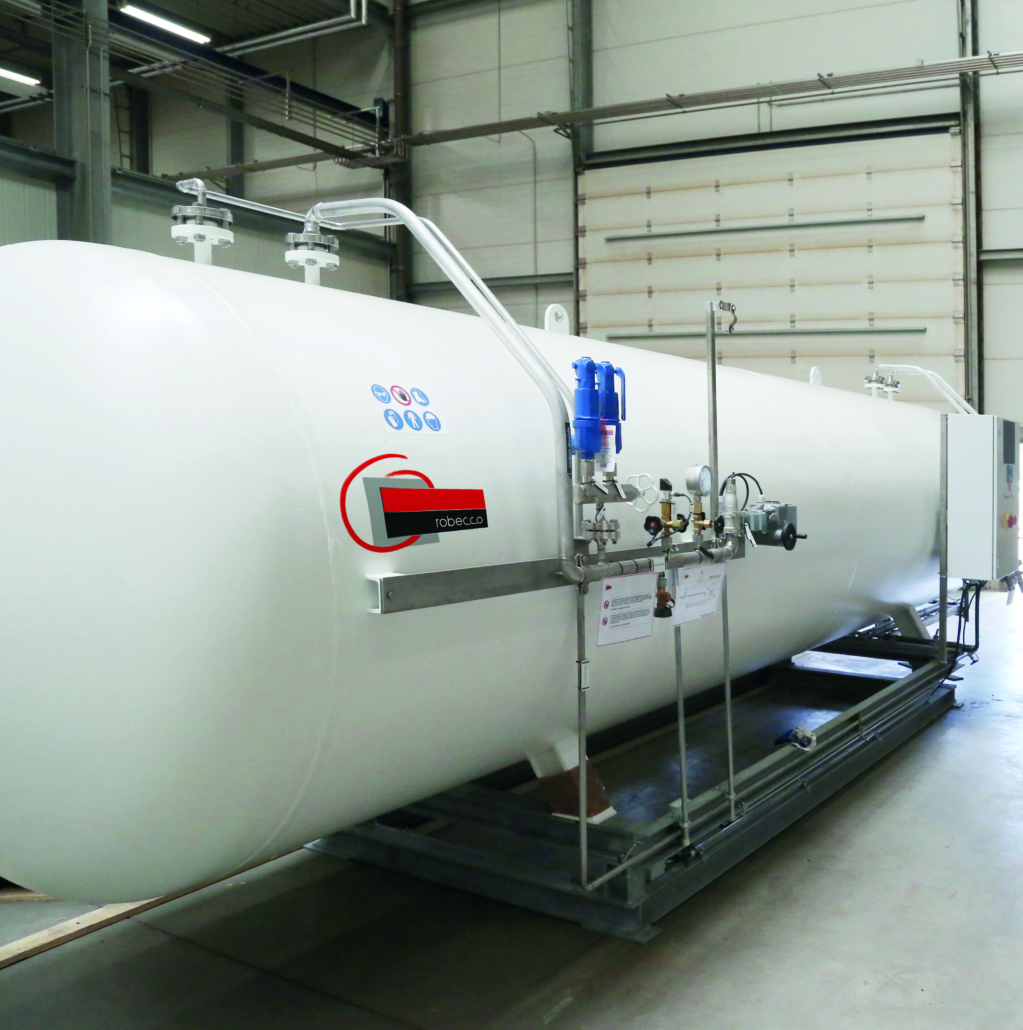Beitrag im Magazin World Cement März 2023:
IDEAS ON EMERGENCY INERTING
Achim Rott, robecco, describes the mechanics behind emergency inerting systems, explaining the correct procedures to ensure the buildup of combustible dust does not lead to fires and explosions.
PDF-Download
Ideas-on-Emergency-Inerting_2023.pdfWorld Cement Magazine March 2023
Achim Rott, robecco GmbH
Emergency inerting systems are preventive explosion protection technologies that prevent the ignition of fires and dust explosions and thus reduce the occurrence of hazardous incidents. These systems are (mostly) fixed standby systems used in order to avoid dust explosions and to suffocate and extinguish smouldering or glowing fires of combustible dust in silos, coal mills, bag houses, or similar aggregates by creating an inert atmosphere. In case of a CH4, CO, O2, or temperature alarm the inerting process is initiated automatically by an independent PLC. Constant and reliable CH4, CO, O2, and temperature measurements are absolutely necessary.
A continuous reduction of the oxygen concentration to the limiting oxygen concentration (LOC) and a further reduction to the maximum allowed oxygen concentration (MAOC), with the injection of inert gas and permanent control and monitoring of the oxygen levels, is mandatory. The effectiveness of emergency inerting has to be verified via monitoring of the oxygen levels in the system. The maximum allowed O2 concentration (MAOC) is an operational parameter that is set approximately 2 – 3% below the LOC, it is a safety margin set below the LOC. In the case of abnormal levels of carbon monoxide (CO), oxygen, or heat, the inerting process is initiated automatically through an integrated process-control system. The goal at all times is to reduce levels to the LOC so that explosions can no longer take place. The LOC is the highest oxygen concentration at which an explosion cannot occur regardless of the dust concentration. The LOC depends on the kind of fuel that is used and needs to be determined separately in consultation with an authorised body. With lignite (brown coal) for example the LOC amounts to approximately 12% by volume using N2,and approximately 14% when using CO2. Emergency inerting is discontinuous and can be used to prevent fires and explosions by extinguishing smouldering nests and glowing fires which can become the primary causes of the ignition and propagation of open fires. Depending on the inert gas used (source VDI2263-2) effectiveness for inerting generally decreases in the following order: The flow-through inerting method or the displacement inerting/flushing method is mostly practical. The necessary inerting time andinert gas volumes of individual aggregates with constant geometrical volumes is theoretically calculated during the engineering and design phase and has to be checked and corrected as necessary after commissioning by practical tests based on the measured MAOC value. The necessary inerting time and inert gas volumes of individual aggregates with variable geometrical volumes (e.g. silos) is theoretically calculated during the engineering and design phase according to different filling levels and has to be checked and corrected after commissioning using practical tests based on the measured MAOC value. Inert gases have low levels of reactivity and. are used to reduce oxygen concentrations to below critical levels. Inert gases act as simple asphyxiants, they displace the normal air and cause suffocation due to a lack of oxygen. By doing this, they prevent the occurrence of critical operating conditions and consequently any resulting explosions or fires. Different inert gases offer vary degrees of efficacy, and it is often not absolutely necessary to remove all of the O2. Nevertheless, extinguishing smouldering or glowing fires of combustible dusts and powders is only possible at oxygen concentrations of 2 – 3% (maximum). Therefore, the inert gas concentration and related oxygen level has to be kept up over a longer period (several hours or days) until the fire is suffocated or extinguished. Monitoring and control of the effectiveness of emergency inerting is only possible with a combination of CO/CH4 and O2 measurements. A single CO measurement does not indicate any effectiveness, since the inert gas is diluting the CO level without giving any reliable information about the remaining oxygen concentration. By installing the correct monitoring equipment and software, the tell-tale signs of a fire and subsequently an explosion can be detected in sufficient time to initiate the emergency inerting system and prevent both the fire and the explosion from occurring. Generally, it is recommended to erect emergency inerting systems outside of a dust explosion area zone (20, 21, 22) according to European ATEX guidelines 99/92/EC (user guideline) and 2014/34/EC (product guideline). In a case where the emergency inerting system must be erected within one of these dust explosion zones, an ATEX guideline must to be applied for. Emergency inerting systems should be designed according to the following European directives: ATEX general requirements: principles of integrated explosion safety Equipment and protective systems intended for use in potentially explosive atmospheres must be designed from the point of view of integrated explosion safety.1 In this vein, the manufacturer must take the following measures: • Above all, if possible, to prevent the formation of explosive atmospheres which may be produced or released by equipment and by protective systems themselves (inerting). • To prevent the ignition of explosive atmospheres, taking into account the nature of every electrical and non-electrical source of ignition. • Should an explosion nevertheless occur which could directly or indirectly endanger persons and, as the case may be, domestic animals or property, to halt it immediately and/or to limit the range of explosion flames and explosion pressures to a sufficient level of safety. It should be noted that the LOC decreases, with respect to the MAOC, as temperatures rise within the process. This has to be taken into consideration when adjusting alarm levels and inerting volumes. Basic rule: Suffocating and extinguishing smouldering or glowing fires is only possible at a maximum oxygen concentration of 2 – 3%.Ideas on Emergency Inerting





